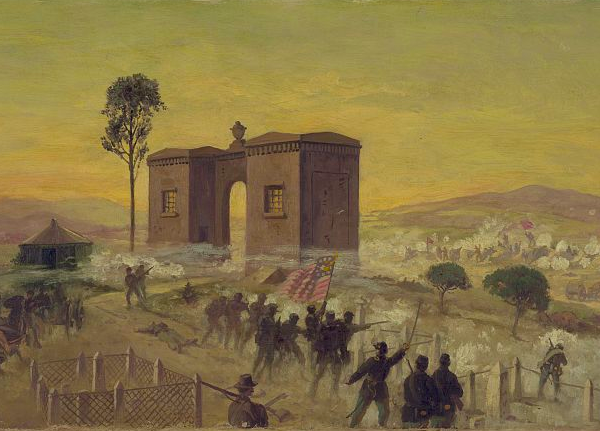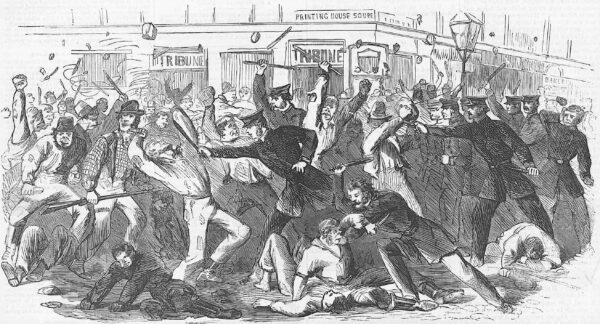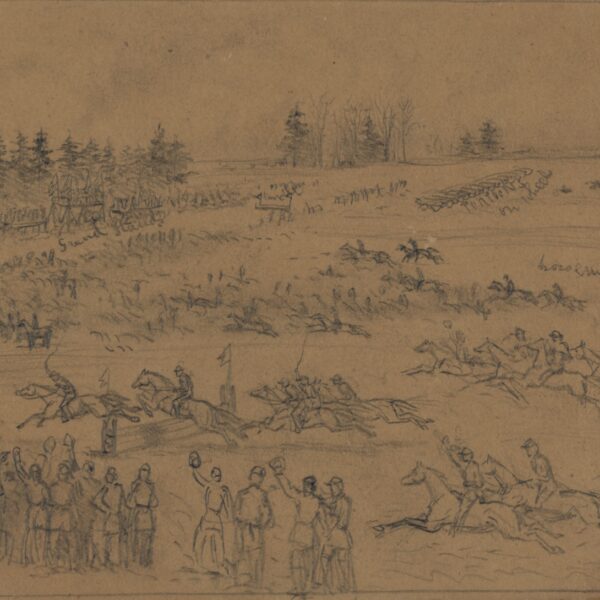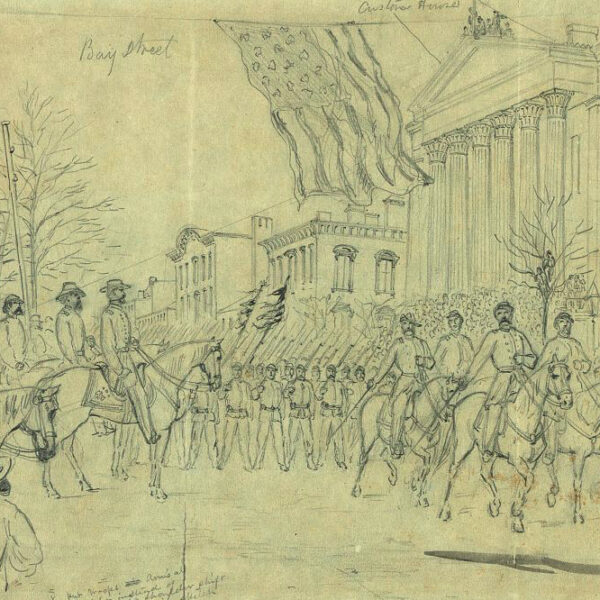Few regions offer a denser concentration of Civil War history than Central Virginia. The historical significance of the region is reason enough to visit, but the fact that you can retrace the conflict’s final major campaigns within the span of 24 hours makes it too good to miss.
For those looking to get the most out of their time in Richmond or Petersburg, we put together the ultimate Civil War day trip—and there’s no better route to follow than that of the Appomattox Campaign. From Petersburg to Appomattox, the historic wonder, scenic beauty, and small-town charm can’t be beat—it’s the quintessential Civil War experience.
Along a hundred miles of picturesque country road, one can see well over a dozen significant historical sites while following the steps of Union and Confederate forces entwined in desperate battle during the final days of the Civil War in Virginia. The Appomattox Campaign begins with the Siege of Petersburg and the Breakthrough Battle, so we’ll start our ultimate Civil War day trip off in Petersburg.

STARTING POINT, PETERSBURG: Between June 1864 and March 1865, Petersburg was the site of a grueling campaign between the armies of Robert E. Lee and Ulysses S. Grant. Union forces had laid siege to the vital southern city, through which supplies were shipped to the Confederate capital at Richmond, located approximately 20 miles to the north. On April 2, 1865, Grant’s men finally achieved the breakthrough in the Confederate lines they had long been hoping for, resulting in the surrender of Petersburg, the evacuation of Richmond, and the westward retreat of Lee’s army toward Appomattox. Start your journey off after a good night’s rest at the historic Ragland Mansion (205 S. Sycamore St.; 800-861- 8898). The mansion, built circa 1856 by Reuben Ragland, a wealthy railway and real estate mogul, survived the nine-month Siege of Petersburg and went on to host all manner of celebrities and dignitaries. The nine-room, 10,000-square-foot bed and breakfast in the Poplar Lawn area of historic Petersburg still has 150-year-old mysteries, hinted at by its hidden storage for silver bars and man-sized passageways and crawl spaces built in between the floors. The breakfast here, however, is unambiguously delicious.

STOP 1—PAMPLIN HISTORICAL PARK: As you leave Petersburg, stop by Pamplin Historical Park (6125 Boydton Plank Rd.; 877-726-7546), which features state-of-the-art museums, informative living historians, live artillery firing demonstrations, and original Confederate earthworks. One could easily spend a weekend soaking in all that Pamplin has to offer (and we definitely think you should), but for the purposes of this trip, the Battlefield Center should be your focus. Its 3D exhibit of the Petersburg Campaign leading up to the breakthrough and a detailed fiber-optic map of troop movements during the Appomattox Campaign provide context for your journey west to Appomattox Station. Exiting the Battlefield Center, you’ll find the entrance to the Breakthrough Trail. Visitors of all abilities can tour the interpretive trail (“loops” range from 0.3 to 1.25 miles, or 15 to 45 minutes at a leisurely pace) and enjoy sweeping views of the battlefield, the Confederate picket line, an original artillery redan, and many other artifacts and resources preserved by the park.
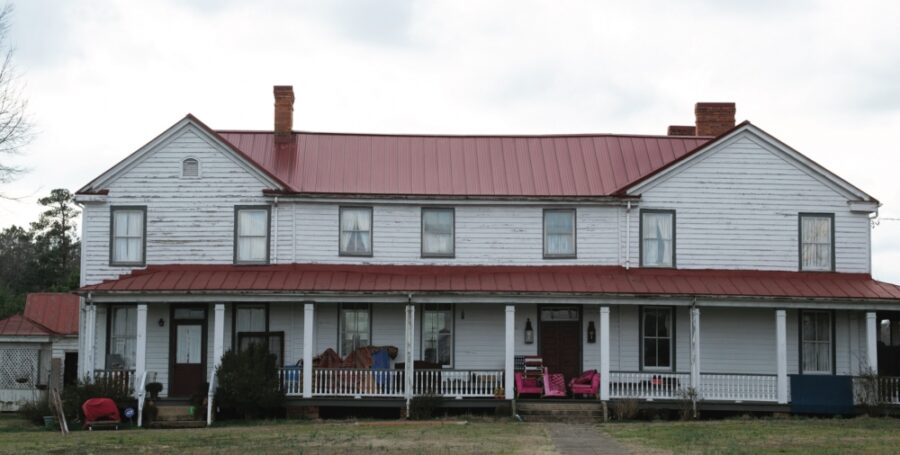
STOP 2—SUTHERLAND TAVERN: Continuing west, hop on US-460 for just three miles before turning right on Namozine Road. Immediately on your left is Sutherland Tavern, also known as Fork Inn (19621 Namozine Rd., Sutherland, VA; 804-265-8141). A Civil War Trails sign describes the fighting that occurred at Sutherland’s Station on April 2, 1865, when four Confederate brigades were overwhelmed by Union forces under Major General Nelson Miles. This victory marked the Union capture of the South Side Railroad—Lee’s last supply line into Petersburg. After the battle, the building served as a field hospital for the wounded. Today the tavern is owned by the Olgers family and is open for tours during Southside Virginia Heritage Days (April 13–14 this year) or by appointment year round.
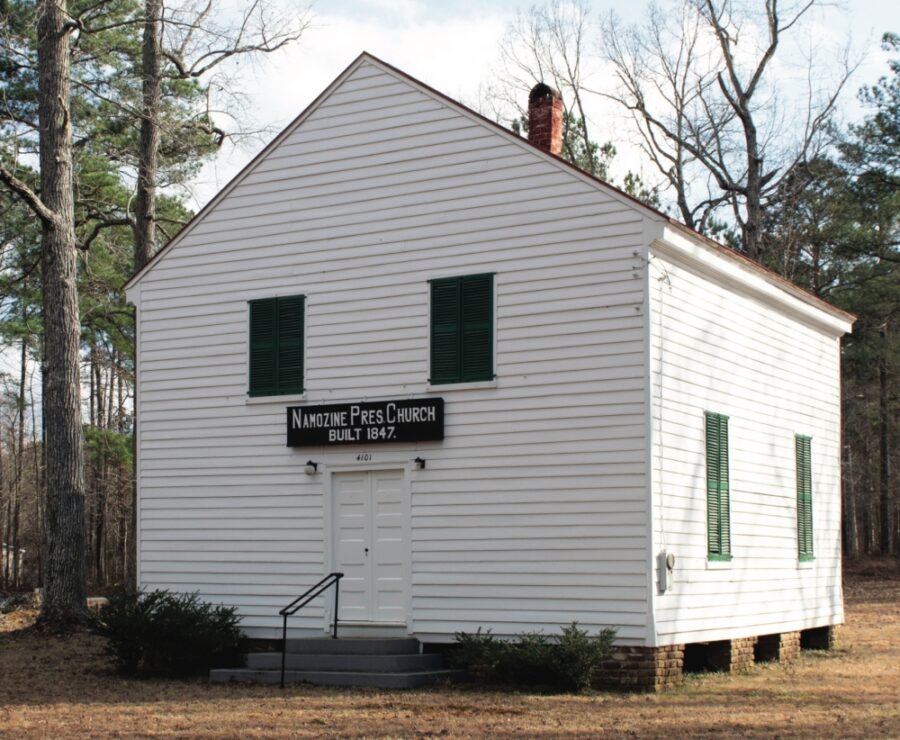
STOP 3—NAMOZINE CHURCH: Continue on Namozine Road for another 10 miles and you’ll come to Namozine Church (near the intersection of Namozine Road and Route 622)—also worth a stop. One can see bullet holes in the building’s exterior from skirmishes that took place nearby on April 3, 1865—the first clash between Union and Confederate forces after Lee’s evacuation of Petersburg and Richmond. Elements of Major General George Armstrong Custer’s cavalry under the command of Colonel William Wells caught up with and engaged troops from the rear guard of the retreating Army of Northern Virginia, led by Major General Fitzhugh Lee’s horsemen. The Confederates lost the skirmish, along with one gun, 10 caissons, and approximately 350 men who were captured. The church later served as a field hospital; bloodstains from the wounded are still visible on the floor.
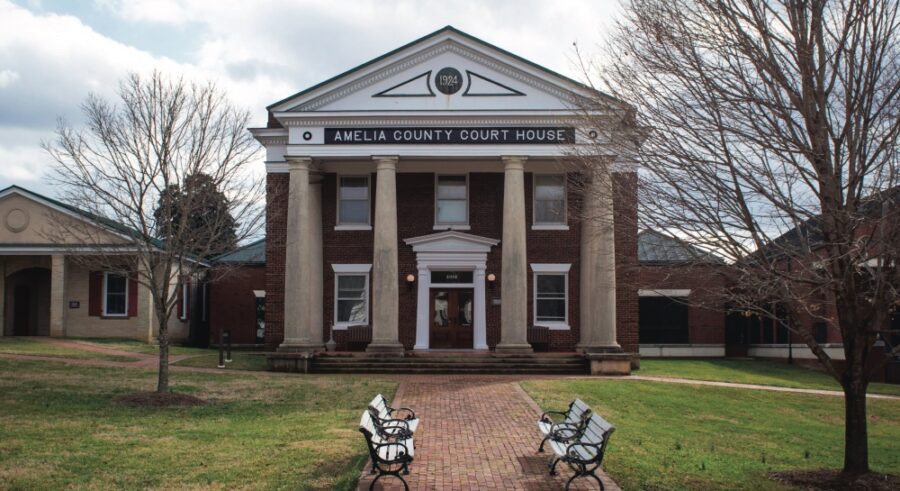
STOP 4—AMELIA COURT HOUSE: Another 20 rolling miles west (via State Route 708 and VA-38 West) lies Amelia Court House. Stop here to stretch your legs on the lawn of the present-day courthouse building in the town center (16441 Court St.; 804-561-6364) and grab a quick bite to eat across the street at Hatcher’s Catering (16420 Court St.; 804-561-0334). A Central Virginia staple, Hatcher’s serves up country comfort done right. Classic sandwiches, barbecue platters, breakfast—whatever you’re in the mood for, Hatcher’s has the fix. Back at the courthouse, you’ll note a lone Confederate mortar—it was captured by Union forces on April 5, 1865, after Lee’s armies, who rendezvoused here on April 4–5 in desperate need of rations but were sorely disappointed at the arrival of rail cars full of munitions, continued their retreat. Lee’s plan had been to march south along the Richmond and Danville Railroad toward Danville and North Carolina, where he hoped to combine forces with the Confederate army commanded by General Joseph E. Johnston, but in lieu of a resupply, he was forced farther west into Farmville, where rations awaited him. We’ll follow their footsteps there—hop on 360 West for eight miles and then veer right onto 307 West and follow the sign for Sailor’s Creek Battlefield.
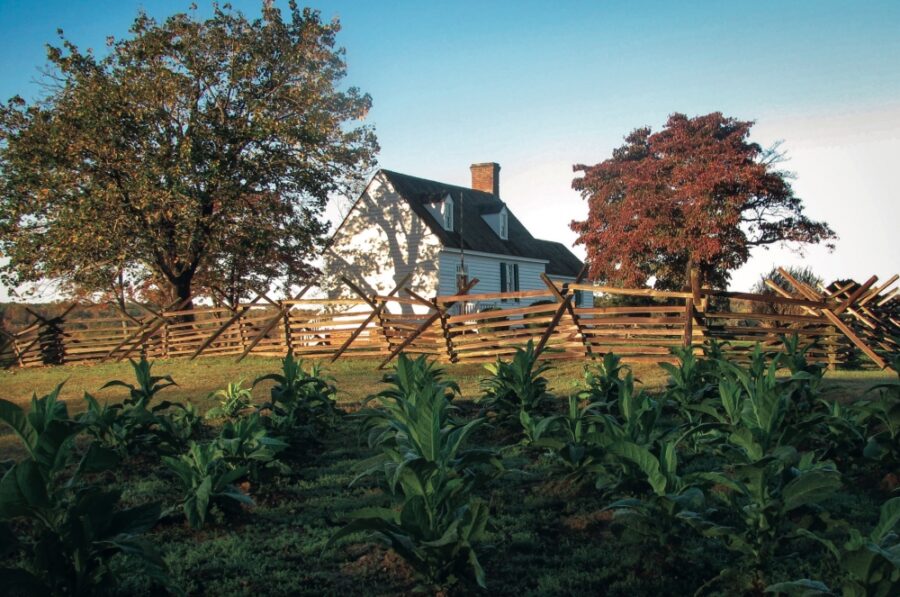
STOP 5—SAILOR’S CREEK: The visitors center at Sailor’s Creek Battlefield State Park (6541 Sayler’s Creek Rd., Rice, VA; 804-561-7510) is a mandatory stop for any Civil War enthusiast. The offerings at this small but mighty historic state park—where, on April 6, 1865, nearly a quarter of the soldiers in the Army of Northern Virginia were wounded, killed, or captured in a decisive defeat at the hands of Grant’s Union force—include interactive displays, an impressive collection of artifacts, and interpretive walking trails that retrace troop movements across the battlefield. The Hillsman House, located across the battlefield from the visitors center, is also of note. Guests can walk the grounds outside the home where 20 pieces of artillery under the command of Major Andrew Cowan bombarded the Confederate lines on the opposing ridge. This battlefield was the scene of desperate fighting—it was the last major clash of the war between Lee’s and Grant’s armies—after which the Hillsman House was used as a field hospital for both Union and Confederate wounded. Today it is available for tours by request. Within 72 hours of the horrific fighting at Sailor’s Creek, Lee surrendered to Grant at Appomattox Court House, where we’ll journey after a brief stop in Farmville.

STOP 6—FARMVILLE: For those looking to turn this day trip into a weekend affair, Farmville is a great place to spend the night. Hotel Weyanoke (202 High St.; 434- 658-7500) offers top-of-the-line amenities like a rooftop bar, three restaurants, and amazing access to the historic Civil War sites in and around Farmville. The most obvious of these is High Bridge Trail State Park (dcr.virginia.gov/state-parks/high-bridge-trail; 434- 315-0457), which is 31 miles long and bisects the town. Confederates partially burned High Bridge, which spans the Appomattox River, after crossing it on April 7, 1865. Union forces, however, were able to prevent the bridge’s complete destruction and used its lower-level wagon bridge to continue their pursuit of Lee’s men into Farmville. High Bridge is located five miles east of the trail’s downtown intersection with Main Street. Bike rentals from the Outdoor Adventure Store (318 N. Main St.; 434-315-5736) are available. You can also drive to the Camp Paradise parking lot, which is a short walk from the bridge and provides trail access to the Appomattox River below. Lee’s forces left Farmville with Union troops right on their heels. In fact, Lee and Grant both passed through Farmville on April 7—Lee and his armies while moving westward to Lynchburg in search of rations and Grant just hours behind in pursuit. Our tour continues to Appomattox, where Lee and Grant negotiated a final surrender. Need to refuel before hitting the road? Check out Uptown Coffee Cafe (236 N. Main St.; 434-392-5282) for a caffeine fix. For those in search of a meal, try Walker’s Diner (307 N. Main St.; 434-392-4230), which offers a quick and delicious breakfast, lunch, and dinner.
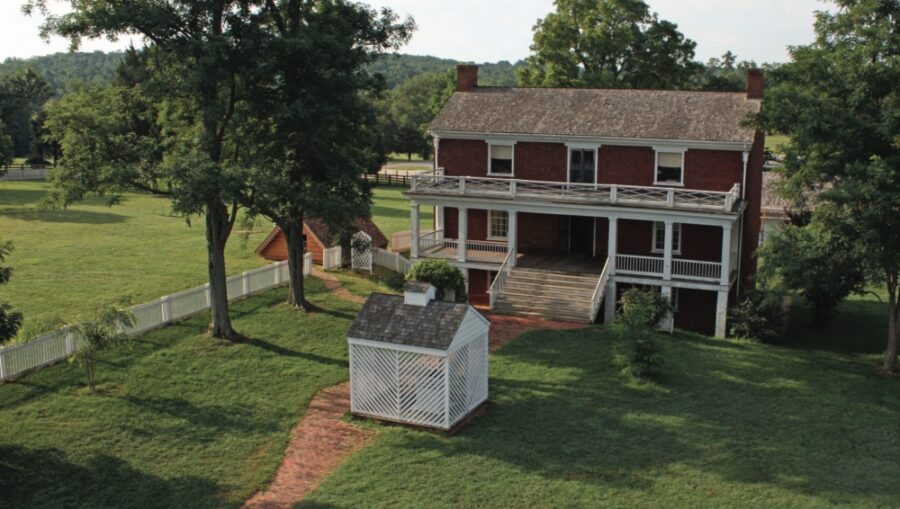
STOP 7—APPOMATTOX: From Farmville it’s another 30 minutes on US-460 West to our final destination, Appomattox, which witnessed the final days of the Civil War and where two sites work to preserve that history. The first of these is Appomattox Court House National Historical Park (111 National Park Dr.; 434-352- 8987), which is home to the McLean House, where Lee formally surrendered to Grant, effectively ending the war. Visitors can start their journey at the visitors center in the reconstructed courthouse. From there, guests can walk through a small historic village complete with tavern and general store. The park also has over eight miles of both natural and historic trails. Nearby is The American Civil War Museum–Appomattox (159 Horseshoe Rd.; 434-352-5791), which this spring will feature a new rotating exhibit titled “Enacting Freedom: Black Virginians in the Age of Emancipation,” curated in cooperation with Virginia Tech’s Center for Civil War Studies. The exhibit explores how African Americans from Virginia communities experienced freedom after enslavement. The museum’s permanent exhibit, “Appomattox,” is replete with hundreds of fascinating artifacts, photographs, and documents. They include a digitized copy of the original Appomattox parole log; guests can search for familiar names and even print out pages to take home. With the day likely now nearing an end, a clean room and fresh linens may sound like a good option. For those who don’t have plans to return to Petersburg for the night, the historic Babcock House in Appomattox (250 Oakleigh Ave.; 434-352-7532) is a gem of a bed and breakfast. Built circa 1884 by Bradley Babcock, a Confederate cavalryman and cousin of Orville Babcock, a Union officer who helped secure the McLean House for the final surrender negotiations, this six-room B&B offers a peaceful stay with local and historic charm. The locals rave about the food, too, so if you can’t get a room, a table is a close second.

